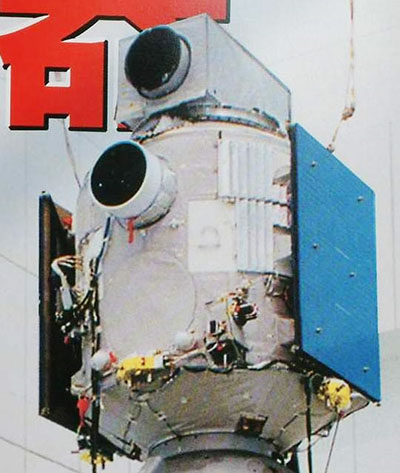Special to CosmicTribune.com, October 18, 2023
By Richard Fisher
Oct. 15, 2023 marked the 20th anniversary of China’s first manned spaceflight, the Shenzhou-5 mission that saw former People’s Liberation Army Air Force Shenyang J-6 fighter pilot Yang Liwei orbit the Earth 14 times in 21 hours before landing.
But for a Chinese Communist Party (CCP) leadership that worships technology and hardly ever misses a chance to laud Chinese technical achievements resulting from the leadership of the Party, the 20th anniversary of Yang’s first spaceflight was a relatively minor news item. Articles did appear in China Daily and the Military Online version of the People’s Liberation Army Daily.

Commenting on China’s Tiangong space station, China Daily paraphrased Yang saying, “Tiangong serves as a national space experiment platform and brings benefits to humanity as a whole.”
But what Yang likely will never admit publicly, nor will the propaganda machine of the CCP, is that the Shenzhou-5 flight marks the 20th anniversary of People’s Liberation Army controlled Chinese manned space program that has consistently produced dual-use military benefits for the PLA.
It is a manned space program that from the beginning has also served to advance China’s military capabilities in space.
Starting with the Oct. 15, 2003 mission of Shenzhou-5, astronaut Yang Liwei was actually the secondary payload; the primary payload for that first manned space flight were two large optical cameras in the spacecraft’s orbital module that conducted Low Earth Orbit optical surveillance of targets on Earth for the PLA.
Based on the Russian’s Soyuz spacecraft three section design — propulsion module, manned module and orbital equipment module — the orbital module of Shenzhou-5 continued to conduct Earth surveillance for five more months until March 16, 2004.
The previous four unmanned Shenzhou missions also carried military payloads: Shenzhou-1 (Nov. 19, 1999) carried an electronic intelligence system; Shenzhou-2 (Jan. 9, 2001) also carried an electronic intelligence system; Shenzhou-3 (March 25, 2002) carried an optical camera; and Shenzhou-4 (Dec. 29, 2002) carried an optical camera and a radar surveillance system.
Full Text . . . . Current Edition . . . . Subscription Information

You must be logged in to post a comment Login